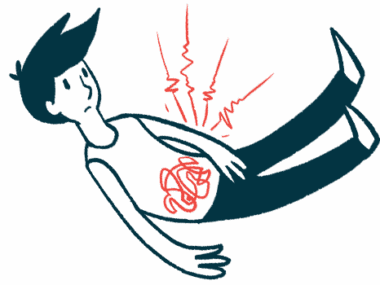Remission Before Pregnancy Linked to Better Post-partum Outcomes
Findings underscore importance of counseling for women with SLE
Written by |

Women with systemic lupus erythematosus (SLE) whose disease went into remission right before becoming pregnant show better outcomes in the post-partum period, including a lower flare rate, according to a two-year follow up study.
These findings highlight how “planned pregnancy counseling is fundamental when managing SLE patients,” the researchers wrote.
The study, “Disease activity at conception predicts lupus flare up to 2 years after birth: A multicentre long term follow-up study,” was published in Seminars in Arthritis & Rheumatism.
Women with SLE are often advised to avoid having children due to frequent complications. In the past 20 years, improved knowledge of disease mechanisms, treatment advances, and updated guidelines have collectively improved outcomes for patients.
The clinical management of SLE in pregnant women still poses challenges, however, and studies suggest 2.5% to 68% of pregnant women have flares. Few studies have assessed SLE activity during the post-partum period, the six months following delivery and while women are breastfeeding, however.
A team led by researchers in Italy conducted a multicenter international retrospective study to see what factors might influence SLE activity in women up to two years after giving birth.
Data were analyzed from women with SLE who gave birth in hospitals across five countries (Italy, Brazil, Spain, Japan, and Argentina) from 2000 to 2019 and with two-year post-partum data available.
In total, 119 women (mean age, 29.9 at conception) and a first birth were included. The disease lasted for a mean of 17.2 years, and patients were followed for a mean of 15.4 years.
SLE activity in women after giving birth
At diagnosis, joint manifestation was the most common symptom (95 patients, 79.8%), followed by acute skin involvement (76 patients, 63.9%), blood manifestations (64 patients, 53.8%), kidney involvement (49 patients, 41.2%) and serositis, or inflammation of the tissues that surround and protect internal organs (28 patients, 23.5%).
Before birth, most (87.4%) received hydroxychloroquine. Low doses of the steroid prednisone (under 7.5 mg per day) were used by 49 patients (41.2%), while higher doses (above 7.5 mg per day) were used by 70 (58.8%). Azathioprine was the most commonly prescribed immunosuppressive agent (34.5%) followed by mycophenolate mofetil (22.7%).
During pregnancy, hydroxychloroquine was used by 101 patients (84.9%), low dose prednisone by 66 (55.5%), and high doses by 28 (23.5%). Fifty two patients (43.7%) received low-dose aspirin and 29 (24.4%) were treated with heparin, both medications used as blood thinners.
The mean SLEDAI-2K, a measure of SLE severity where higher scores represent higher disease activity, was 2.8 at conception.
Twenty patients (16.8%) were not considered to be in remission (defined by a SLEDAI-2K score of zero) or showed very low disease activity (SLEDAI-2K score of 1–2) at conception. Except for two patients, clinical manifestations resolved within the first three months of pregnancy.
A total of five cases of pregnancy complications were reported, including two cases of intrauterine growth restriction, two of pre-eclampsia, and one of newborn lupus. Live birth occurred in 79% of the cases. There were 37 miscarriages and eight stillbirths.
In the two years following birth, 61 patients (51.3%) had at least one flare. In total, 85 flares were registered.
The first flare occurred at a mean of nine months after birth and was associated with a mean increase of 6.8 points in the SLEDAI-2K. This first flare most commonly affected the joints (29 flares, 47.5%), followed by the kidneys (20 flares, 32.8%), skin (17 flares, 27.9%), and blood parameters (12 flares, 19.7%).
Flare activity at different times
Patients in remission at conception had significantly lower flare rates during follow-up (36.7% vs. 61.4%). When both patients in remission and those with low disease activity at conception were included, this flare reduction, although not so striking, was still significant (42.7% vs 65.9%).
Women who had flares only during follow-up (61 patients) and those in remission at conception (18 patients) had a significantly lower number of flares at follow-up compared with other women (mean 1.1 vs. 1.5). These women also breastfed longer (10.1 vs. 5.9 months).
Overall, 17 women had flares during pregnancy. Compared with those without flares during pregnancy, those who had flares had an increased rate of them during follow-up (76% vs. 47%), and had the first flare earlier (4.4 vs. 10.3 months). Also, fewer of these women were in remission at conception (12% vs. 46%), had lower SLEDAI-2K scores at conception (5.9 vs. 2.3 points), and lower rates of exclusive breastfeeding (24% vs 57%).
Remission at conception was negatively correlated — meaning the greater the one, the lower the other — with flares at follow-up, a statistical analysis showed.
Also, women in remission at conception showed a significant reduction in first flares affecting blood parameters (4% vs 14%), skin (6% vs. 20%) and joints (10% vs. 34%).
These findings show how achieving remission before conception can improve outcomes in the post-partum period.
“We demonstrate the importance of planned pregnancy counseling when managing patients with SLE and show the importance that pregnancy counseling and close follow-up during pregnancy may have for future pregnancies in these women,” the researchers wrote.






